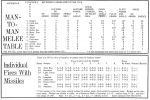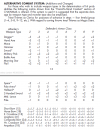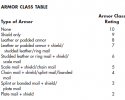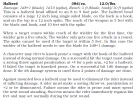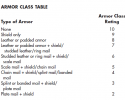I've always felt like the weapon vs. armor type concept in 1E AD&D was one of the most under-appreciated and under utilized components of the system — a failed experiment that really deserved to succeed. Ignoring it seriously weakens the fighter class because it removes their ability to use a well chosen selection of weapon proficiencies to consistently gain quite substantial bonuses against humanoid foes. And, most weapons usable by non-fighters aren't that great against heavy armors, meaning fighters are defensively stronger, relatively speaking, when these rules are in effect.
The rules usually get lumped in with the kaleidoscopic mess of mutually distinct sub-systems in the game (and not in a good way), but with just a little difference in presentation the value of it could have been more easily understood and used. Like, instead of having 59 weapon types and 9 armor types, how about ~20 unique weapon types and ~5 unique armor types, so the whole thing is closer to the human ability to work with visually complex tables? And how about including the table on the DM's screen (gah!!! One of the only things you have to have in front of you all the time to use the rule effectively, and the chowderhead who designed this thing left it off! At least, off of the version i own.
What's your take on these rules? use them? Love them? Hate them? Any shortcuts you developed to bring them into play more easily?
The rules usually get lumped in with the kaleidoscopic mess of mutually distinct sub-systems in the game (and not in a good way), but with just a little difference in presentation the value of it could have been more easily understood and used. Like, instead of having 59 weapon types and 9 armor types, how about ~20 unique weapon types and ~5 unique armor types, so the whole thing is closer to the human ability to work with visually complex tables? And how about including the table on the DM's screen (gah!!! One of the only things you have to have in front of you all the time to use the rule effectively, and the chowderhead who designed this thing left it off! At least, off of the version i own.
What's your take on these rules? use them? Love them? Hate them? Any shortcuts you developed to bring them into play more easily?




